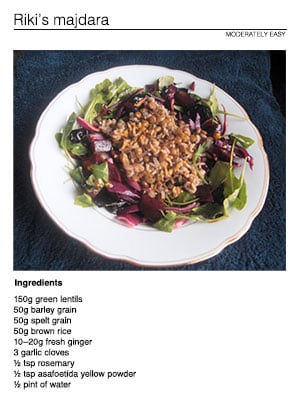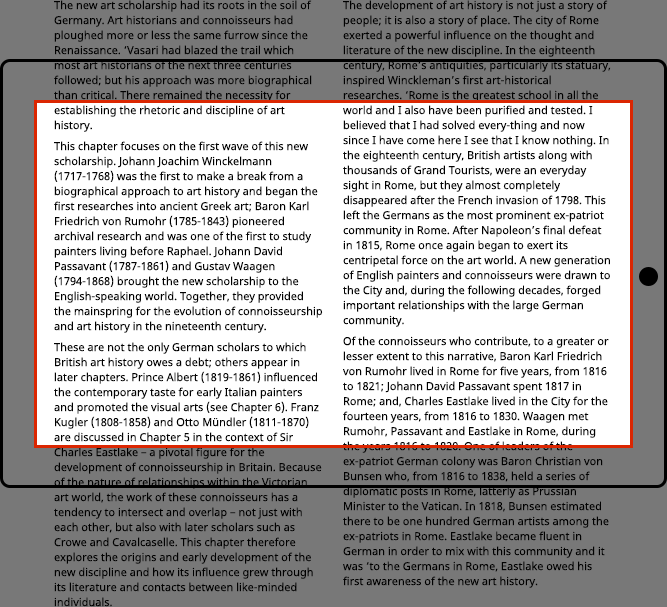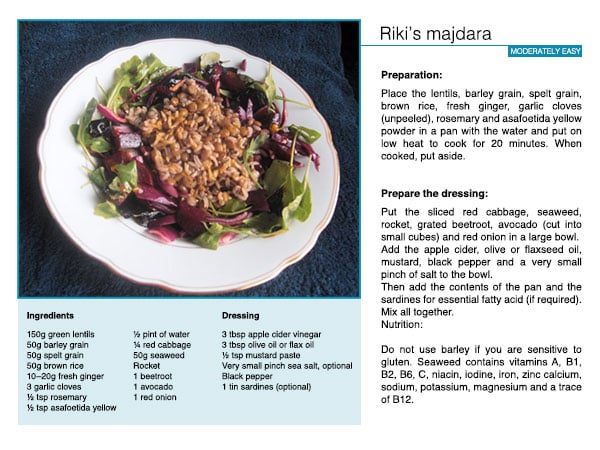There are two main types of ebook, standard (re-flowable) and fixed-layout. The requirements of each ebook project determine which type is best suited.
Standard (re-flowable) ebooks
This is the most common, widely supported ebook standard. It is best for text-only books, or ones with few illustrations. Novels, and many non-fiction titles such as reference works and biographies are usually created as re-flowable ebooks.
Standard ebooks come in two main formats:
- EPUB – the standard ebook format used by Apple, Google and others.
- KFX – the proprietary format used by Amazon for the Kindle.
Standard ebooks can include images, tables, lists and a varying degree of control over typefaces. However, text and ‘page’ size is controlled by the reader device or application. Device settings for text size, background colour and more can also be overridden by the user, so it’s possible for the layout to change.
As an example, here is a page from recipe book created as a standard ebook. Each recipe has a main photo, which is allowed to fill the display width, followed by an ingredients list and other text. The page layout will change depending on the display size, orientation and text size setting.

Re-flowable content and the viewport
In a standard ebook content re-flows to fit the display size. The reader device or application acts a viewport, or window, onto this content. In the following example you can see how it isn’t possible to use a two-column layout because there is no way to reliably set the breakpoint. We can’t know where one column should end and another begin because the viewport is out of our control. There are no exact ‘page’ sizes. If we need this level of control we need to look at fixed-layout ebooks.

Fixed-layout ebooks
Fixed-layout ebooks allow for more complex page layouts where absolute control over element placement is required. Children’s titles, recipe books and illustrated textbooks are often created as fixed-layout ebooks. For example, here is the same ebook from our previous example re-created in this way:

Fixed layout ebooks give us more control over image placement, typography, text columns and more, although users can still change device orientation, zoom in, or make limited adjustments to text size.
Fixed-layout ebooks aren’t as well supported as standard ones, so publication options are more limited:
- EPUB 3 – the latest version of the EPUB standard is supported by Apple, Kobo, Google and some others.
- KFX – the latest format used by Amazon for the Kindle. Only newer Kindle devices such as the Paperwhite or Fire models support this. (Kindle ebooks were previously a combination of the older MOBI format, and newer KF8 format, packaged as a single file. This meant older devices received an ebook they were capable of displaying, but which didn’t look as good.)
Fixed-layout ebooks are generally created for the Books app on iOS & macOS, the Amazon Kindle Fire and other newer models, and some other Android devices.
Please note that support for fixed-layout ebooks on the Kindle isn’t particularly good. Different Kindle models have different levels of support, and the official guidelines from Amazon are vague.